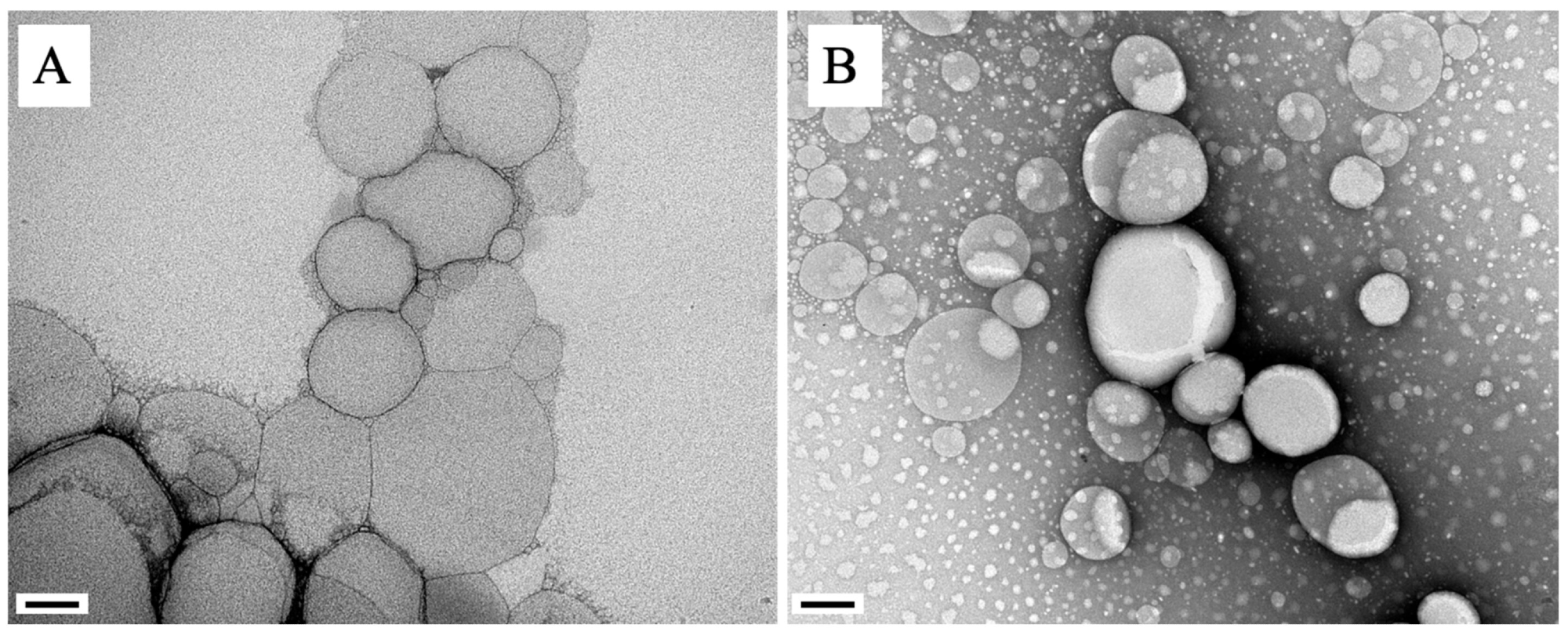Researchers at São Paulo State University (UNESP) have created a revolutionary therapeutic approach that has the potential to completely change the way that visceral leishmaniasis, a neglected tropical disease (NTD) spread by sandflies, is treated. The World Health Organization (WHO) estimates that 12 million individuals worldwide suffer from the disease and that between 700,000 and 1 million new cases develop each year.
 Lipid nanoparticles seen under a microscope, without (A) and with (B) the encapsulated active principle. Image Credit: IB-CLP
Lipid nanoparticles seen under a microscope, without (A) and with (B) the encapsulated active principle. Image Credit: IB-CLP
The researchers’ strategy includes using lipid nanoparticles to inject lupeol, a chemical compound known to destroy the disease-causing Leishmania protozoan parasites. Lupeol is a triterpene found in a variety of vegetables and fruits, such as mangos, grapes, and strawberries, as well as green peppers and olives.
In tests on animals, the technique effectively eliminated Leishmania from afflicted organs. The findings are detailed in a study published in the journal Pharmaceuticals.
There are three types of leishmaniasis. The visceral type is the deadliest, with a death risk of up to 95% if left untreated and up to 10% even when treated, according to WHO. The other two are cutaneous leishmaniasis (the most prevalent, resulting in skin ulcers) and mucocutaneous leishmaniasis (affecting the mouth, nose, and throat).
The existing treatments, which mostly include the administration of pentavalent antimonials or amphotericin B, have serious adverse effects, notably on the heart, liver, and kidneys. Some leishmaniasis drugs are exceedingly expensive, placing a significant load on public health systems, and if administered incorrectly, they can trigger drug resistance in the parasite.
As a result, the researchers emphasize in the study the critical necessity to discover or create novel active compounds, some of which have been found in plants.
Researchers from the Institute of Biosciences at UNESP's Coastal Experiment Campus (IB-CLP) in São Vicente developed a new method to administer lupeol using lipid nanoparticles.
Lupeol has been shown in vitro to be capable of eliminating forms of Leishmania, but it isn’t very soluble in physiological solutions, which limits its bioavailability in vivo.
Adriana de Jesus, Study First Author and Postdoctoral Researcher, São Paulo State University
She added, “Putting it in lipid nanoparticles solves the problem by surmounting biological barriers, maximizing therapeutic effect and delivering the medication to the targets, which in the case of visceral leishmaniasis are the spleen, liver and bone marrow. The nanocarriers are simply the delivery vehicle. When they reach the target site, with the right pH they open up and release the medication.”
First Time Ever
The research used four groups of hamsters infected with Leishmania infantum and treated for ten days. The first group received only lupeol, the second group received lupeol-containing nanoparticles, the third group received empty nanoparticles, and the fourth received simply a placebo.
Samples were collected from the animals’ spleen, liver, blood, and plasma for biochemical, physiopathological, and parasite load investigation.
As predicted, lipid nanoparticles containing lupeol were more successful than lupeol alone in eradicating visceral leishmaniasis parasites from the spleen and liver: administering the nanoparticles with lupeol for ten days decreased the parasite count by 99.9%.
“In addition, the animals treated in this way exhibited minimal histopathological alterations in the spleen and liver. For the first time ever, we proved that this combination is highly effective in treating the disease and is a significant formulation whose use should be considered,” de Jesus added.
Lupeol nanoparticles were injected intraperitoneally. The researchers now intend to create a nanocarrier for oral delivery, allowing patients to take their medication at home, as well as versions for topical treatment of cutaneous leishmaniasis.
Journal Reference:
Jesus, J. A., et. al. (2024) Nanostructured Lipid Carriers as Robust Systems for Lupeol Delivery in the Treatment of Experimental Visceral Leishmaniasis. Pharmaceuticals. doi:10.3390/ph16121646.